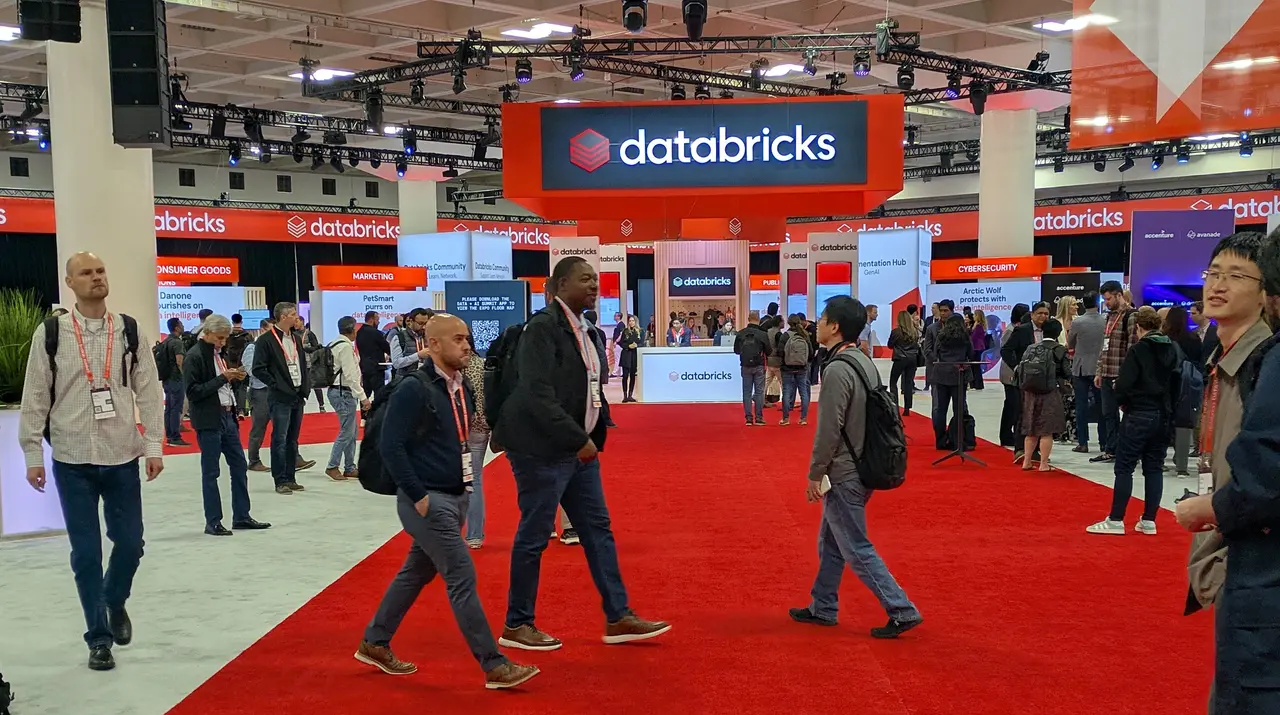The Evolution of Data Annotation in AI-Powered Manufacturing: Trends and Best Practices
2 Sources
2 Sources
[1]
Role of Data Annotation Services in AI-Powered Manufacturing
Before diving deep into how AI/ML is a boon for manufacturers, let's explore how the industry has evolved. Steam and water-powered mechanics disrupted manual processes, thus filling the demand versus supply gap. The introduction of assembly lines followed, allowing manufacturers to increase output while reducing product prices. Partial automation further empowered the manufacturers with mass production capability. Finally, the next big breakthrough came with AI and ML, adding intelligence to the automation formula. In other words, AI is at the forefront of industrial revolution 4.0. Not only this, but a strategic combination of AI with new-age technologies such as cloud computing, IoT, robotics, etc., spearheads the manufacturing industry to new heights, making the processes more accurate, efficient, and scalable. Thus, it is right to say that manufacturers have come a long way -- from tackling issues like hazardous floor fires and labor shortages impacting productivity to managing demand and supply and maximizing production without increasing costs. In short, AI has made the manufacturing sector "smart" and resilient! The latest report states that the global AI in manufacturing market size is expected to surpass USD 230.95 billion by 2034, expanding at a CAGR of 44.20%. From predictive maintenance to automation, AI-powered applications are revolutionizing traditional processes and enabling manufacturers to achieve greater efficiency and scalability. That said, the data annotation process is what makes AI successful in the manufacturing industry. Data annotation underpins the success of AI initiatives in every industry, let alone manufacturing. It involves tagging data, including text, videos, images, and audio. Accurate and relevant tags, descriptions, and other contextual information are added to raw data to make it comprehensible for machine learning algorithms. In manufacturing, predictive analytics helps identify potential equipment failures before they occur, minimizing downtime and reducing maintenance costs. Similarly, computer vision systems inspect products on assembly lines with unparalleled speed and accuracy, ensuring adherence to quality standards. These innovations contribute to cost reduction, operational efficiency, and enhanced customer satisfaction. The key to achieving these outcomes is via data annotation services. These are imperative for AI systems to understand and interpret data and perform the desired actions, such as identifying defects and predicting maintenance needs. At the same time, ensuring the accuracy and quality of data fed into AI systems is important. Otherwise, the model produces unreliable results, undermining its utility in critical applications. In manufacturing, for example, an incorrectly labeled dataset for defect detection leads to the misidentification of defective products. For AI systems to learn and perform desired actions, training datasets must accurately represent real-world scenarios. The absence of diverse data limits the model's capability to learn, evolve, and make decisions. However, data annotation is not as simple as it may seem. The right techniques and tools must be implemented to ensure that the manufacturing AI system yields the desired results. Different data annotation techniques cater to diverse use cases in AI-powered manufacturing where each technique has unique applications, depending on the complexity and specificity of the task. Some of these techniques are mentioned below: This technique involves drawing rectangular 2D boxes around objects of interest in images or videos, enabling AI/ML models to identify and localize them. This method is widely used for object detection applications, such as identifying defective products on an assembly line or tracking tools in a workspace. Unlike 2D bounding box annotation, which involves only the length and breadth of the object of interest, 3D cuboid annotation includes height/depth. This three-dimensional representation of objects offers a more detailed perspective of the AI systems. It is essential for tasks like robotic navigation and warehouse automation, where spatial positioning is important. Polygon annotation allows for more detailed labeling of objects with irregular shapes. Through granular shape recognition, this technique offers greater precision than bounding boxes. Such detailed precision is essential for the manufacturing industry, where even minor defects can compromise a product's integrity. Thus, polygon annotation is ideal for detecting cracks in machinery, identifying oddly shaped components, and analyzing complex patterns in raw materials. This technique is used to label sequential data, such as video frames, to track changes over time. In manufacturing, temporal annotations are used to label manufacturing workflow sequences and sensor data timestamps. It monitors product flow across assembly lines, ensuring machinery operates within designated parameters, and analyzes worker movements to improve ergonomics. Semantic segmentation involves labeling every pixel in an image or voxel in 3D point clouds to classify it into different categories. This technique is useful for high-resolution tasks in manufacturing, such as defect detection on highly detailed surfaces or monitoring equipment wear, where the exact area of a defect must be identified. As the name suggests, audio annotation involves labeling sound data to train models for audio-based applications, such as detecting machinery malfunctions through sound analysis. Audio recordings from equipment are transcribed into text and labeled with timestamps and machine sounds. By identifying patterns in audio signals, AI systems pinpoint irregularities indicative of equipment issues. Above all, it ensures compliance in noisy industrial environments. As evident, data annotation in manufacturing is a significant undertaking. Even a minor error in annotations can lead to unreliable outcomes. In addition to reducing the AI application's utility, a significant amount of effort and resources also go in vain. Thus, a smarter alternative is to outsource data annotation services. By doing so, manufacturers can ensure the quality and scalability of their AI/ML models while focusing on core competencies. While data annotation is integral to AI's success in manufacturing, knowing the best practices is equally important. Especially for companies annotating datasets independently, it is essential to follow the best practices to maximize the effectiveness of data annotation in manufacturing. The integration of AI-powered applications in manufacturing has redefined the industry's operational landscape, offering unprecedented levels of efficiency, precision, and safety. Central to this transformation is the role of data annotation, which lays the foundation of successful AI initiatives. By providing context to the raw data, annotations enable the AI systems to understand and interpret the data and perform actions such as predicting maintenance needs and identifying defects. And, as the manufacturing industry continues to embrace digital transformation, investing in high-quality data annotation services will remain a critical enabler of AI-driven innovation.
[2]
The Future of AI Data Annotation: Trends and Best Practices
AI has turned industries such as health and finance on their heads; however, the strength of AI very much depends upon a single variable-the quality of data and its annotation. The more sophisticated the AI model becomes, the more advanced the processes supporting its learning become. In this article, we will explore current trends in data annotation and highlight best practices to provide reliable datasets. Usually, data annotation takes time and manpower as human annotators label their photographs, texts, and videos. In contrast, AI model development carries with it a great demand for large amounts of varied and accurately labeled data. This is why annotation quickly changes from what was traditional to a more modern approach-a trend that has been noted toward automation, active learning, and also model-assisted labeling to enhance efficiency and accuracy.
Share
Share
Copy Link
An exploration of how data annotation is revolutionizing AI applications in manufacturing, detailing various techniques and their importance in enhancing industrial processes and efficiency.

The Rise of AI in Manufacturing
The manufacturing industry has undergone significant transformations, from steam-powered mechanics to assembly lines, and now to AI-powered processes. Artificial Intelligence (AI) and Machine Learning (ML) are at the forefront of the fourth industrial revolution, enhancing automation with intelligence
1
. This strategic combination of AI with cloud computing, IoT, and robotics is propelling the manufacturing sector to new heights, making processes more accurate, efficient, and scalable.The Growing AI Market in Manufacturing
The global AI in manufacturing market is projected to exceed USD 230 billion by 2034, with a compound annual growth rate (CAGR) of 44%
1
. This substantial growth underscores the increasing adoption and importance of AI technologies in the manufacturing sector.The Critical Role of Data Annotation
Data annotation is the backbone of successful AI initiatives in manufacturing. It involves tagging various types of data, including text, videos, images, and audio, with accurate and relevant information to make it comprehensible for machine learning algorithms
1
.Key Data Annotation Techniques in Manufacturing
-
2D Bounding Box Annotation: Used for object detection in images or videos, crucial for identifying defective products on assembly lines.
-
3D Cuboid Annotation: Provides a three-dimensional representation of objects, essential for robotic navigation and warehouse automation.
-
Polygon Annotation: Offers detailed labeling of irregularly shaped objects, ideal for detecting minor defects in products or machinery.
-
Temporal Annotation: Used for labeling sequential data, such as video frames, to track changes over time in manufacturing workflows.
-
Semantic Segmentation: Involves labeling every pixel in an image for high-resolution tasks like detailed defect detection.
-
Audio Annotation: Crucial for detecting machinery malfunctions through sound analysis and ensuring compliance in noisy industrial environments
1
.
Applications of AI in Manufacturing
AI-powered applications are revolutionizing traditional processes in manufacturing:
-
Predictive Maintenance: AI systems can identify potential equipment failures before they occur, minimizing downtime and reducing maintenance costs.
-
Quality Control: Computer vision systems inspect products on assembly lines with unparalleled speed and accuracy, ensuring adherence to quality standards.
-
Process Optimization: AI algorithms analyze production data to optimize workflows and increase efficiency
1
.
Related Stories
Emerging Trends in Data Annotation
The field of data annotation is rapidly evolving to meet the growing demands of AI model development:
-
Automation: There's a shift towards automated annotation processes to handle large volumes of data more efficiently.
-
Active Learning: This approach involves the AI model actively participating in the learning process, identifying areas where it needs more labeled data.
-
Model-Assisted Labeling: Leveraging pre-trained models to assist human annotators, improving both speed and accuracy
2
.
Best Practices in Data Annotation
To ensure the reliability and effectiveness of AI systems in manufacturing:
-
Ensure Data Quality: Accurately labeled datasets are crucial for AI systems to perform desired actions reliably.
-
Maintain Data Diversity: Training datasets must accurately represent real-world scenarios to enhance the model's capability to learn and evolve.
-
Choose Appropriate Techniques: Select the right annotation techniques based on the specific requirements of each manufacturing application
1
2
.
References
Summarized by
Navi
[2]










